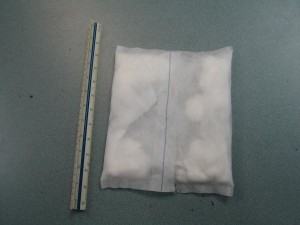Ideal, Types and How to Apply

A dressing is used to protect a wound and prevent infection from occurring, while allowing it to heal, which also vary size, depending on the size of the wound.
A dressing is used to protect a wound and prevent any infection from occurring, while allowing it to heal. Dressings will greatly vary in size but a general rule is that it should be large enough to completely cover the wound, preferably with a safety margin of about 2.5cm on all sides beyond the wound. Moreover, a sterile dressing can also be utilized to control severe bleeding or absorb discharge from a minor wound.
Characteristics of an Ideal Wound Dressing
There is no single dressing that would be fitting for all wound types. There is often a number of various types of dressings that will be used during the healing process of a single wound. An ideal wound dressing should have at least one or more of the functions:
- Sustains a moist environment at the wound/ dressing interface
- Takes in excess exudates without leakage to the surface of the dressing
- Offers thermal insulation and mechanical protection
- Offers protection from bacteria
- Allows fluid and gaseous exchange
- Absorbs odour from the wound
- Non-adherent to wound and can be easily removed without trauma
- Capable of removing dead tissue and/ or foreign particles
- Non-toxic, non-allergenic and non-sensitising
- Sterile
Types of Dressings
There are several different types of synthetic wound dressings available in the market. The common dressings include:
- Gauze Used on minor wounds or as secondary dressings
- Tulle Most suitable for flat, shallow wounds
- For patients with sensitive skin
- Semi permeable filmMost suitable for shallow wounds with low exudates
- HydrocolloidsDifferent forms are used based on amount of exudates, sloughing or granulating wounds
- HydrogelsSuitable for necrotic or sloughy wound beds to rehydrate and remove dead tissue
- AlginatesSuitable for exudating wounds and helps remove dead tissue and/ or foreign particles
- Not for low exudating wounds
- Polyurethane or silicone foamsIntended to absorb large amounts of exudates
- HydrofibreAbsorbs exudates and sustains a moist environment in a deep wound
- Collagens
- Absorbs exudates and sustains a moist environment
How to Apply Dressings
The proper application of dressings for wound care is essential in healing. The following steps are used in applying dressings:
- Wash hands with soap and water. If gloves are available, use these.
- Encourage the victim to sit or lie down.
- If there is still bleeding, control bleeding by applying direct pressure and elevating the area above the heart.
- After getting the appropriate dressing, hold the dressing at the edges. Keep the fingers away from the part that will cover the wound.
- Place the dressing on top of the wound.
- Use adhesive tape to secure the dressing.
Disclaimer: The information from this article does not provide
medical advice and should not be substituted for formal training. Seek medical attention when necessary. To learn more about to apply wound dressings and other essential techniques in first aid, enrol in First Aid Courses and CPR Courses with St Mark James Training.
Online Sources:
http://www.stjohn.org.nz/en/First-Aid/First-Aid-Library/Immediate-First-Aid1/Dressings-and-Bandages/
http://dermnetnz.org/procedures/dressings.html
http://www.nhs.uk/chq/Pages/1053.aspx?CategoryID=72&SubCategoryID=721